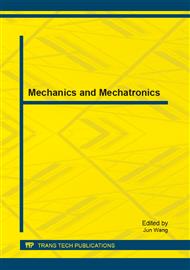p.264
p.269
p.273
p.280
p.286
p.292
p.299
p.305
p.310
Application of Periodic Boundary Conditions in Studying Stent Expansion
Abstract:
The stent is commonly used to support blood vessels to avoid blood obstruction. Its tubular structure is a combination of micro periodic structures. The stent is expanded uniformly due to its internal pressure during the implantation process until plastic deformation occurs. In this article, the simulation of a representative model with application of the proposed periodic boundary conditions is performed by using ABAQUS/Explicit package and Matlab code. To make a comparison, the entire model of the same type stent with general boundary condition is also analyzed. The numerical results show that the deformation and stress distribution calculated by the representative model is a little higher than those of the entire model, but their overall results agree well with each other. Therefore, the numerical results of the entire stent can be obtained by a simple geometrical tessellation of the deformed representative models. The advantage of this method is that it can significantly reduce the modeling and computing time for analyzing expansion of vessel stent.
Info:
Periodical:
Pages:
286-291
Citation:
Online since:
October 2013
Authors:
Price:
Сopyright:
© 2013 Trans Tech Publications Ltd. All Rights Reserved
Share:
Citation:


